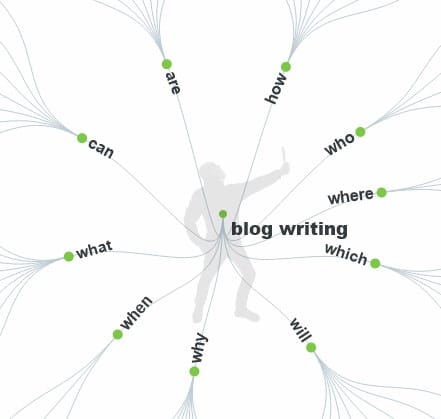
Optimizing your content for very broad topics can be difficult, especially when too many websites have already done the job.
Take for example “blogging tips”, or “how to blog”, or even “SEO content writing”.
When people are searching for Google, normally they are not looking for broad topics.
They are looking for specific information.
They don’t want to sift through pages and pages of information before they find precisely what they are looking for.
Hence, a person is more likely to search for “blogging tips for generating blog topic ideas”, or “blogging tips to improve SEO”, or “SEO content writing tips for an accounting website”.
Writing blog posts on broad topics doesn’t just fail to help your readers, it also poses problems for you when you need to come up with lots of blog writing ideas.
Hence, if you write a blog post on “blogging tips” then you have sealed the topic for ever and if you write on the same topic, you create duplicate content.
On the other hand, if you create a blog post on the title “12 blogging tips for an accounting app startup” you have more scope for similar blogging ideas, such as “7 blogging tips to improve engagement for a web design website”.
What is top-down approach to blog post writing?
When researching on the topic I came across this informative blog post that talks about the top-down approach to content planning.
This further brought to my mind the concept of creating topic clusters and pillar pages.
Topic clusters work on the same top-down approach.
Suppose you choose a broad topic “blog writing”
- Then you choose a tool like Answerthepublic to generate a list of topics such as
- Can writing blog posts make you money?
- How to quickly start blog writing without wasting time in learning the ropes?
- How can you use blog writing in business communications?
- How to calculate the ROI of blog writing?
- Which is the easiest blogging platform for writing blog posts?
- How to make it easy to write a blog post every day?

Frankly, the list goes on and on.
This top-down approach to writing blog posts can give you practically unlimited blog topic ideas.
These are also called creating content clusters.
You choose the main topic, write an introduction for the main topic in a dedicated blog post, and from that blog post, you start linking to all the subtopics that you create.
Why not create a big, humongous blog post covering all the possible topics instead of creating content clusters?
Most of your readers don’t want to read 5000 words just to find out how to start a blog for business communications.
People use precise queries on Google.
For example, people searching for “how to calculate the ROI of blog writing” may not be looking for blogging platforms which you will include in a 5000-word blog post.
Instead, you create highly targeted blog posts addressing individual topics so that it’s easier for people to not just find the topics on Google but also go through them without having to sift through a ton of information they don’t need right now.
The top-down approach in blog writing prevents you from solely focusing on very broad topics and then wondering why you are not faring well on search engines.
Even big websites that have published thousands of blog posts find it difficult to rank for broad topics because there is too much competition.
Even if they rank well for broad topics (how to SEO your blog, for example) it is simply because for years they have been following the top-down approach for blogging and content writing which has enabled them to publish hundreds of content clusters and pillar pages for highly targeted topics.
What are the benefits of the top-down approach to blog writing?
One of the biggest benefits is that you can go deeper and deeper.

There is practically an unlimited supply of topics that you can cover when you follow the top-down approach to blog writing.
One of the biggest problems in content marketing in general and writing and publishing content in particular is a lack of ideas.
People start with great fanfare and then very soon they run out of blogging ideas.
When you follow the top-down approach to blog writing, how many blogging ideas you get simply depends on your ingenuity and creativity.
Content clusters also give a reason to your readers/visitors to stay on your blog for a long time.
While they are not forced to go through a very long blog post, they are free to explore as many links as they want that you put on your main topic blog post.
This reduces your bounce rate and this in turn improves your search engine rankings.
It is also easy for people to find the relevant topics when they are visiting your blog.
What about search engine rankings?
When you write blog posts on specific topics it’s easier to rank them compared to the broad topic.
You can write and publish blog content faster with the top-down approach because writing on a single idea is much easier than writing a magnum opus.
It is also easier for you to organize your content.
You can create a list of topics and subtopics using either a dedicated content management software or something like Google Sheets.
You can even use a Google Docs document.
For that matter, you can simply create a folder using your File Explorer and then go on adding sub-folders and then store the relevant documents in these sub-folders.
You will need to keep track of the hierarchy so that in future if you need to make some changes, you can easily reach the right document and make the changes.
